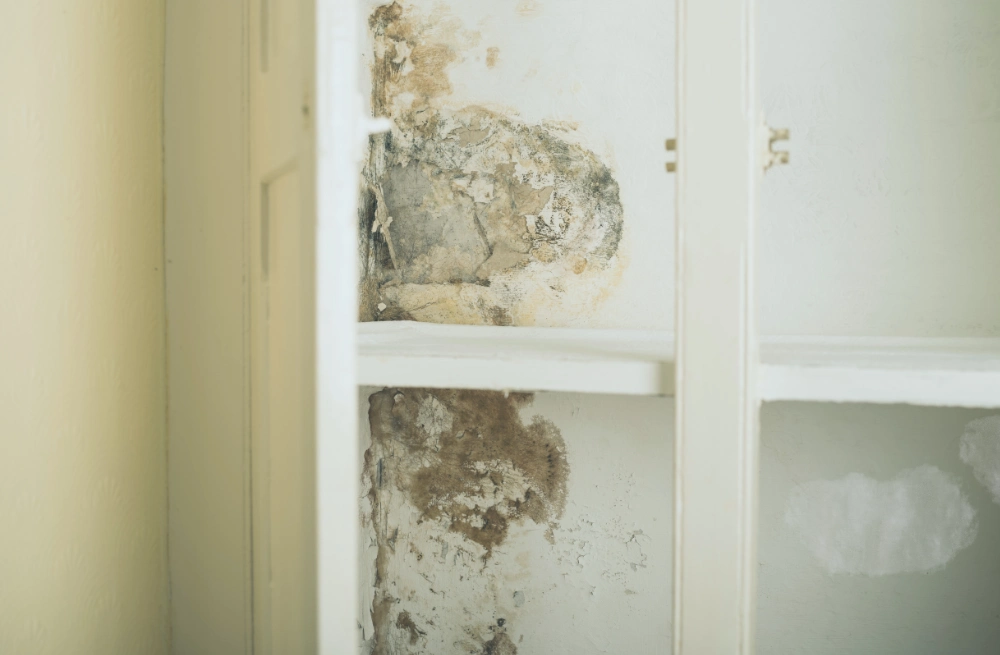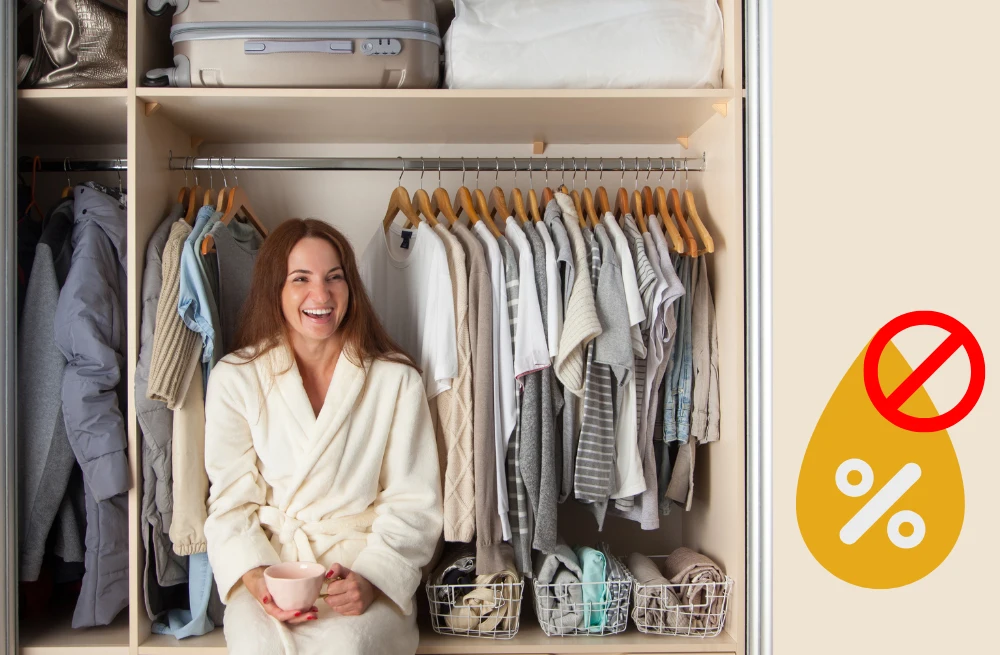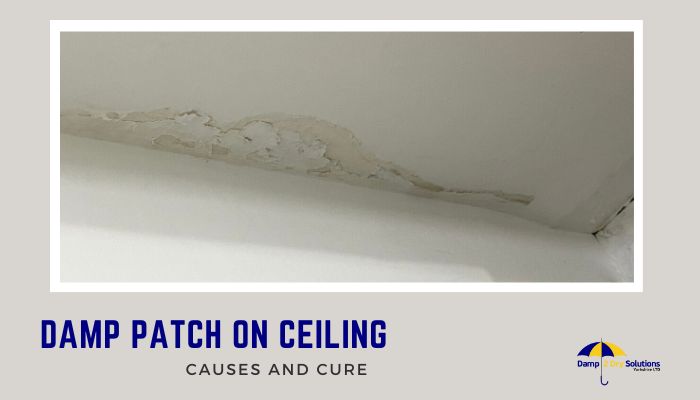Damp in wardrobes isn’t just annoying, it can ruin your clothes, make everything smell musty, and even cause mould. Whether you’ve got a fitted wardrobe or a freestanding one, many UK homes are at risk because of our damp winters, older walls, and condensation issues. This guide will walk you through everything you need to keep your wardrobe dry, clean, and fresh all year round.
Why Do Wardrobes Get Damp?
Damp gets into wardrobes when moisture builds up and can’t escape. This often happens when the wardrobe is against a cold wall, or there isn’t enough airflow. In the UK, we often close windows to keep warm, but that also traps moisture inside.
Main Causes of Damp:
- Your wardrobe is against an outside wall that gets cold.
- Clothes are put away before they’re fully dry.
- There’s not enough air moving around in or behind the wardrobe or cupboards.
- The room is humid, especially in basements or bedrooms without adequate ventilation.
- You’ve packed the wardrobe too tightly with clothes, stopping airflow.
How Damp Affects Different Types of Wardrobes

Fitted Wardrobes
These wardrobes are built right into the wall. If that wall is cold or damp, it traps moisture behind the unit. Because air can’t flow easily in these tight spaces, damp can build up over time, often without you noticing.
Freestanding Wardrobes
These are easier to move and place. But if they’re pushed right up against a wall, especially an outside one, moisture can build up behind them too. That damp air can affect your clothes and cause mould forming.
Signs Your Wardrobe Has Damp
- Your clothes smell musty, even after washing.
- There’s mould or dark spots on the inside of the wardrobe.
- Clothes feel damp or clammy.
- You notice beads of water (condensation) on surfaces.
- Wood panels look swollen, warped, or discoloured.
Simple Ways to Stop Damp in Your Wardrobe
1. Let Air In
Keep the air moving inside and around your wardrobe. Open the doors for 10–15 minutes daily to release trapped moisture. Don’t push the wardrobe right against the wall, leave at least a couple of inches of space to allow air to circulate. If you have a fitted wardrobe, consider fitting small ventilation grills or drilling holes in hidden spots to create natural airflow.
2. Insulate the Wall
Wardrobes next to cold exterior walls are more likely to suffer from condensation. You can attach thermal lining paper or use insulated plasterboard behind the wardrobe to stop the wall from getting too cold. For an affordable DIY fix, even cardboard and foil-lined backing can provide a temporary barrier.
3. Use a Dehumidifier
If your room feels humid or stuffy, a dehumidifier can help. A plug-in dehumidifier is ideal for bedrooms, while rechargeable mini dehumidifiers or moisture traps work well inside the wardrobe itself. These pull excess moisture from the air and stop it settling on clothes and walls.
4. Add Moisture Absorbers
Use silica gel sachets, hanging moisture traps, activated charcoal bags, or baking soda in small open containers. Place them on shelves or in corners where airflow is low. Replace or recharge them regularly for best results.
5. Don’t Overfill It
Stuffed wardrobes trap warm, moist air, especially between tightly packed clothes. Try to leave a finger’s width between hanging items. Store seasonal or rarely used clothing elsewhere to reduce clutter. Use breathable cotton or mesh storage bags instead of airtight plastic containers.
6. Only Store Dry Clothes
Even slightly damp clothes can increase moisture levels and encourage mould forming. Always air dry items thoroughly, especially thick fabrics like coats or jeans. Avoid putting away freshly ironed clothes that still hold steam, let them cool first.
7. Clean Often
Dust, lint, and skin particles can hold moisture and become a breeding ground for mould. Wipe down the inside of your wardrobe or cupboards every month using a cloth dampened with white vinegar or a gentle anti-mould spray. Pay close attention to corners, edges, and the underside of shelves.
8. Keep an Eye on Humidity
Buy a small hygrometer to monitor humidity in the room. Aim to keep it between 40% and 60%. If it regularly goes above 60%, use a dehumidifier or improve ventilation. Keeping your bedroom door open during the day also helps air circulate more freely.
Winter Tips to Prevent Mould
Winter in the UK brings high humidity and cold surfaces, perfect conditions for mould. Here’s how to stop it:
- Fit wardrobe vents to allow trapped moist air to escape naturally.
- Keep indoor temperatures consistent, especially in bedrooms. Use a low-heat radiator or programmable heater to avoid sudden drops in warmth.
- Use moisture-absorbing materials like bowls of uncooked rice or baking soda. These are cheap and effective ways to reduce damp air.
- Open windows for 10–15 minutes daily, even when it’s cold, to let moisture escape and draw in fresh air.
- Check for leaks in walls, ceilings, or around windows. Even small leaks during winter can cause long-term damp and lead to hidden mould.
- Dry laundry outside the room, as drying clothes indoors can increase humidity. If you must dry indoors, use a dehumidifier nearby.
Also Read: How to Keep Your House Dry in Winter
Organise Your Wardrobe to Keep It Dry

A tidy wardrobe allows better airflow and makes it easier to spot problems early:
- Space out your clothes. Avoid pushing hangers together—leave small gaps to let air circulate between items.
- Use breathable storage solutions like fabric boxes or canvas organisers. Avoid plastic boxes, which trap moisture.
- Keep shoes in open racks rather than closed bins, especially if they’ve been worn in the rain.
- Don’t store plastic bags or packaging materials—they hold moisture and stop air from flowing.
- Rotate clothes seasonally, so the same items aren’t sitting untouched for months. This reduces the risk of mildew and stale smells.
- Add desiccants (like silica gel or charcoal packs) to drawers or hard-to-reach corners for continuous moisture control.
What to Put Inside to Keep Damp Away
The right products inside your wardrobe can make a big difference:
- Silica gel: These small packets or damp crystals absorb moisture effectively. Place them in drawers, pockets, or on shelves.
- Activated charcoal bags: Great for both moisture and odour control. Replace every few months.
- Baking soda: A bowl on the bottom shelf or inside a cloth pouch helps control both humidity and smells.
- Uncooked rice: A traditional option that absorbs damp well. Keep it in a breathable cloth bag to avoid spills.
- Cedarwood hangers or blocks: These repel moths, add a pleasant scent, and naturally absorb small amounts of moisture.
- Hanging moisture traps: Designed for wardrobes, these hang from rails and collect moisture into a small tray or pouch.
When You Need Professional Help
If the damp keeps coming back no matter what you try, there could be a bigger problem with your walls or insulation. That’s where we come in.
At Damp 2 Dry Solutions (Yorkshire) Ltd, we offer:
- Free damp surveys to find the cause of the problem
- Expert treatments that stop damp at the source
- Specialist advice for wardrobes, bedrooms, and built-in units
We work across Huddersfield, Leeds, Wakefield, Barnsley, Bradford, and nearby areas.
Final Thoughts

No one wants to open a wardrobe and find their clothes smelling musty or covered in mould. Thankfully, there are plenty of simple, low-cost ways to stop damp in its tracks. From better airflow to smart storage, small changes can make a big difference.
And if it doesn’t go away, it’s worth speaking to professionals like Damp 2 Dry Solutions for a long-lasting fix.
Stay dry, stay fresh!





